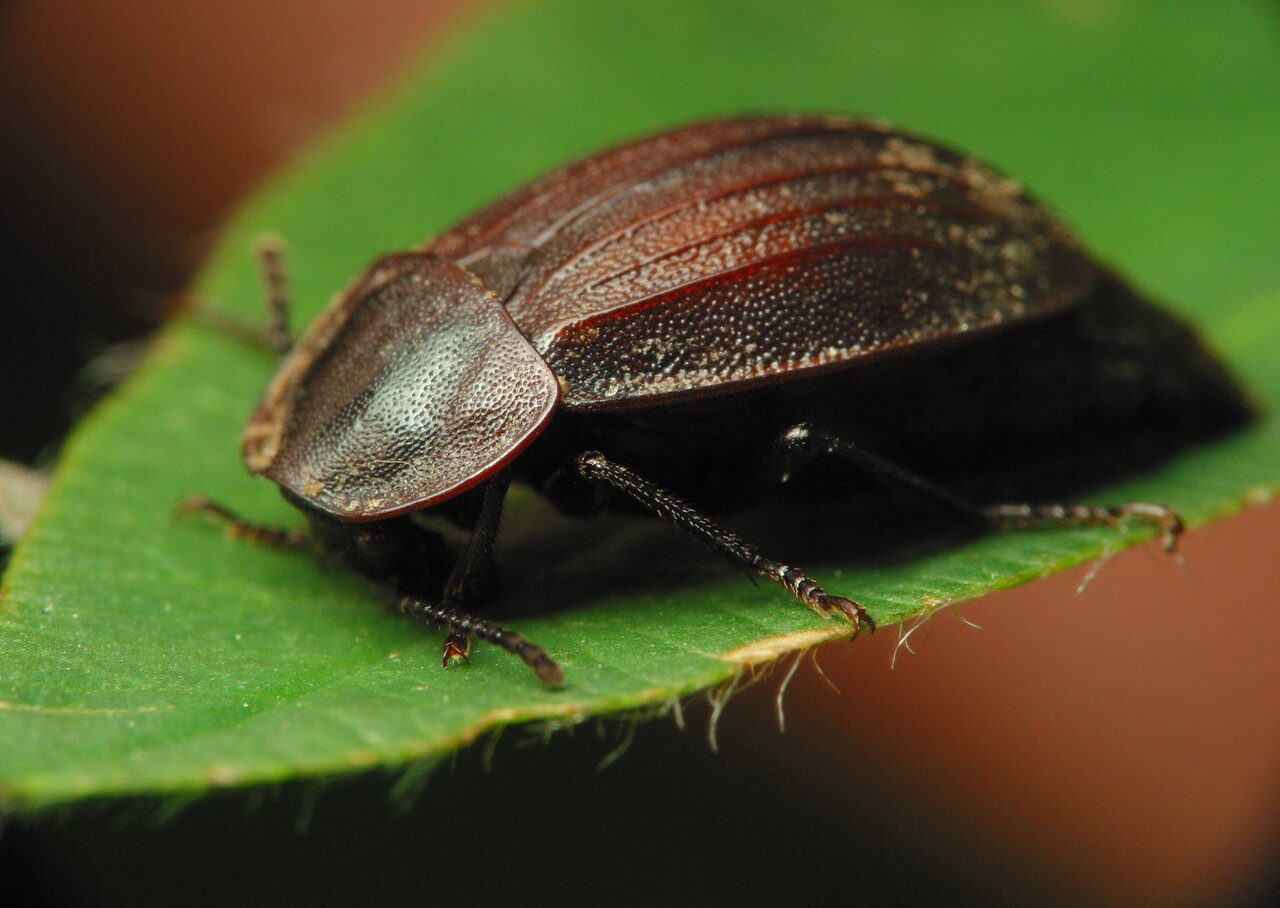
Phosphuga atrata · šliužagraužis maitvabalis
- Silpha atrata
- black snail beetle
- Schwarze Schneckenjäger, Schwarze Aaskäfer
- šliužagraužis maitvabalis
- zaciemka czarna
- snäckjägare
It is widely distributed Palaearctic species. Adults live and breed for several years and may be found in a range of generally moist habitats; typically deciduous woodland borders but also parkland, gardens, damp grassland, peat bogs and coastal dunes. Through the winter they may be found under bark, logs and debris or among litter or tussocks etc, often in groups and generally active. They are nocturnal and may be seen on pathways and logs etc. During the summer, as the temperature increases, they are rarely seen in the open; they rest under logs etc. with the head held under the thorax, and when disturbed secrete a foul smelling yellow liquid. Both adults and larvae feed upon pulmonate snails and earthworms. The adult beetle will climb onto the shell and bite the snail behind its head so causing it to withdraw and secrete defensive mucus. The beetle then applies a salivary secretion which dissolves both the mucus and the snail tissue, after a short while it then enters the shell and begins feeding. Adults do not fly and are assumed to disperse by walking or with the transportation of timber etc.
10-15mm. The beetles vary in colour from entirely black to almost completely red, and distinctly bronze specimens sometimes occur; when groups of adults are found there is usually a range of colour forms present. Entire upper surface strongly and densely punctured, those on the elytra stronger and longitudinally confluent. Lateral pronotal margins strongly bordered. Elytral margins explanate from prominent shoulders almost to the apex, the surface with 4 strongly raised carinae; the outer 3 evanescent before the apex. Legs long and stout (although the beetle does not run quickly), tibiae with rows of short spines and setae; each with strong spurs on the inner apical angle.Randamas nuo Europos iki Japonijos rytuose ir poliaračio šiaurėje. Vabalas iki 15 mm dydžio. Nors plačiai paplitęs, bet sunkiai aptinkamas. Tai lemia gyvenimo būdas – aktyvus ir maitinasi naktį, dieną slepiasi, tūnodamas po medžių žieve, plyšiuose. Sutrikdytas išskiria nemalonų geltoną skystį ir slepia galvą, ją įtraukdamas po gaubtu. Jauni individai yra rudos spalvos, suaugę tampa juodi.
Maitvabalis minta gyvomis sraigėmis, vabzdžiais ir sliekais, taip pat dvėseliena. Jis yra plokščios formos, su aiškiai matoma galva, nes turi ilgą kaklą. Jo pagalba pasiekiama sraigė jos kiaute ir išpurškiamas virškinamasis skystis. Lervos yra juodos, plokščios, taip pat minta sraigėmis. Lėliukės vystosi dirvoje.
‥
0 comments
Add a comment
Comments